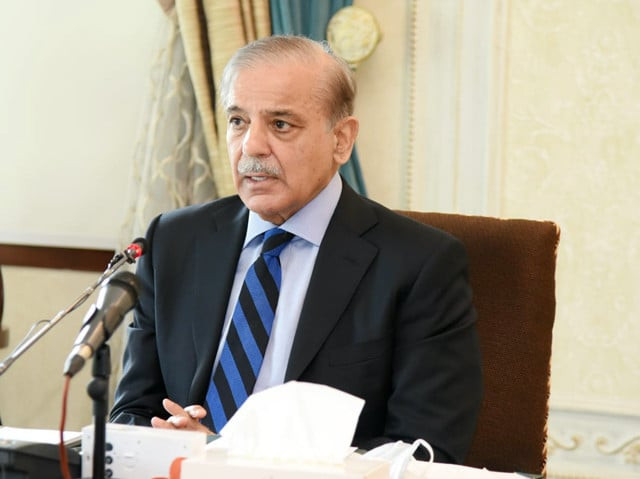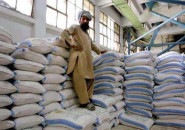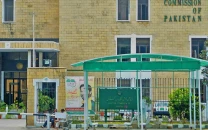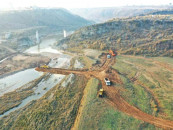Shehbaz sees Rs700b PSDP insufficient
PM chairs first review meeting of under-consideration Rs14.6tr budget

Prime Minister Shehbaz Sharif on Tuesday instructed the relevant quarters to further increase the proposed allocation of Rs700 billion for the development budget for the next fiscal year after the planning ministry objected to a “small size of the envelope”, which appeared insufficient to propel economic growth in the country.
The prime minister gave the instructions to enhance the Public Sector Development Programme (PSDP) budget during the first review of an under-consideration Rs14.6 trillion budget for the fiscal year 2023-24.
The proposed size is over 50% more than this year’s original budget.
According to sources privy to the discussions, the prime minister also directed the finance ministry to review the proposed salary increase for the federal government employees.
They said that the participants of the meeting also raised questions over the performance of the Federal Board of Revenue (FBR), which had failed to expand the tax base and plug the income leakages.
An official handout issued by the PM Office read that the premier had directed the officials to take all possible steps to provide relief to the common man in the upcoming budget.
“All resources should be utilised to reduce the financial difficulties of the poor and middle-class [group], it quoted PM Shehbaz as saying during the huddle.
Of the Rs14.6 trillion, the finance ministry has proposed only Rs700 billion for development spending for the next fiscal year, which is even less than the approved PSDP for the outgoing one.
“The amount of Rs700 billion is not enough to support the country's economic growth, as the public investment size has to be significant because of the current economic situation,” Federal Planning and Development Minister Ahsan Iqbal told The Express Tribune when contacted.
Pakistan’s economy is passing through a difficult phase and various estimates indicate a contraction of up to 3% to a nominal growth of around 0.5% in the outgoing fiscal year.
The planning ministry is finally expected to approve a provisional economic growth figure for fiscal year 2022-23 on Wednesday (today).
“Our earlier projection of a negative GDP growth rate of 1% to 2% in 2022-23 will now need to be revised to a negative growth rate of 3% or more but the PBS (Pakistan Bureau of Statistics) is unlikely to fully reflect this in its initial estimates of the National Income Accounts for this year,” former finance minister Dr Hafiz Pasha wrote in an English daily on Tuesday.
However, Planning Minister Iqbal said the prime minister had instructed both the ministries to finalise a new number of the PSDP allocation.
He added that the planning ministry had asked for a Rs1.2 trillion budget for the next PSDP.
“But the finance ministry has not yet agreed to it,” he continued.
A new report by the International Monetary Fund (IMF) has said Pakistan’s PSDP had become “unaffordable”.
“The PSDP is unaffordable with currently approved projects likely to take a decade and a half to complete before accounting for cost increases,” a technical assistance report prepared by the IMF after a visit in March at Pakistan’s request read.
The global lender underscored that despite severe fiscal constraints and a huge backlog of incomplete projects, new ones with a total cost of Rs2.3 trillion were added to the last budget by the government.
The report noted that the total cost to complete the already approved projects in the PSDP was Rs12 trillion against a budget allocation of Rs727 billion in the outgoing fiscal year.
The technical mission report observed that the years to complete the approved projects “[are] likely understated since [the] ongoing projects not receiving funding in 2022-23 are not counted in the funding backlog”.
The government is also planning to allocate Rs90 billion for the schemes proposed by the members of the National Assembly for the next fiscal year.
For the current fiscal year, the original budget for the parliamentarians’ schemes was Rs68 billion, which the ruling alliance has decided to increase to Rs111 billion to accommodate the projects recommended by the politicians belonging to the Pakistan Democratic Movement (PDM) alliance.
The cost of development schemes has been on the rise due to limited fiscal space and the desire to launch more politically oriented projects.
The planning ministry on Tuesday convened a meeting of the Central Development Working Party (CDWP) for approval of the new and revised costs of the ongoing schemes.
Three notable projects in the CDWP meeting agenda included the Narowal Sports Complex, Sehat Sahulat Card and Jamshoro power plant – the schemes facing a massive surge in their prices because of various reasons.
The cost of the Narowal project has surged from Rs2.3 billion to Rs5.8 billion – an increase of 158%.
The planning ministry has attributed the increase to the suspension of work on the project for five years because of the initiation of Federal Investigation Agency (FIA) and National Accountability Bureau (NAB) inquiries against the scheme.
Both these anti-corruption bodies could not find any wrongdoing but ended up contributing to an increase in its cost.
Similarly, the cost of the Sehat Sahulat card has increased by 53% since 2016 and the project was presented before the CDWP to approve it at a new price tag of Rs51.4 billion.
The project had been launched to cater to the indoor treatment of the people living below $2 per day.
Amid the growing risks of default, the government has proposed the budget deficit – the gap between expenses and the income – at around 7.4% of the gross domestic product (GDP) for the next fiscal year.
In terms of rupee, the federal budget deficit could be Rs7.8 trillion.
The federal primary deficit – calculated after paying interest cost – could be 0.3% of the GDP.
But it is still better than 0.7% of the GDP primary budget estimated for this fiscal year.
The sources said that the overall primary budget might be shown slightly positive on the back of provincial cash surpluses.
The overall budget deficit could be around 6.9% of the GDP or Rs7.3 trillion.
The PM Office claimed that the country's economy was moving towards financial stability.
It added that the fiscal deficit was continuously decreasing.
The federal budget deficit will be about 0.7% of the GDP, less than the outgoing fiscal year, but in terms of rupee, it will be Rs1.1 trillion more than the current one.
The PM Office stated that the premier had instructed that concrete steps should be taken to increase revenue and expand the tax net.
The sources said that some of the participants of the meeting raised questions over the FBR’s inability to expand the tax base.
They added that the allocations for the interest payments might remain around Rs7.5 trillion – higher by Rs3.5 trillion or 87% against this year’s approved budget.
The sources said the finance ministry wanted an allocation of Rs1.7 trillion for the defence budget.
However, the defence ministry demanded an amount of Rs1.92 trillion.
The gross federal government revenues are estimated at Rs11.8 trillion – higher by 25% or Rs2.3 trillion over the original budget.
After paying the shares of the provinces, the net revenues of the federal government are projected at Rs6.5 trillion, according to the sources.
The FBR’s tax target is projected at Rs9.2 trillion – up by 24%, but in terms of the GDP size, it is equal to only 8.7% and not enough to contain the growing public debt as well as finance the expenses.



















COMMENTS
Comments are moderated and generally will be posted if they are on-topic and not abusive.
For more information, please see our Comments FAQ